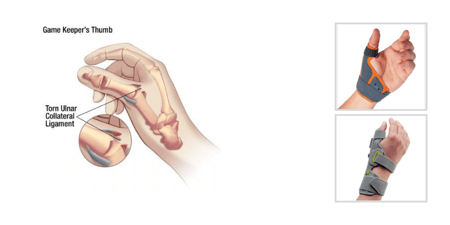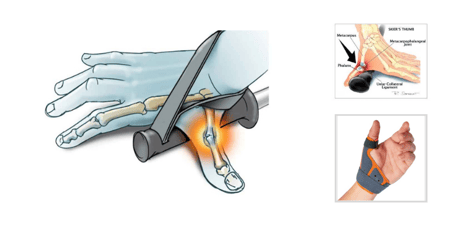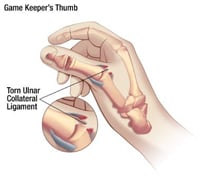
The term Gamekeeper’s Thumb is used when referring to an ulnar collateral injury caused by repetitive stress on the thumb during such activities as using a wrench, twisting electrical cords or wringing out heavy cloths. The term Skier’s Thumb is commonly used when there is an acute, forceful abduction of the thumb as when a skier falls without letting go of the ski pole. The injury may also be the result of falling on an outstretched thumb or catching a ball with an outstretched thumb.
The injury may be relatively mild or complicated by an avulsion fracture of the proximal phalanx at the insertion of the UCL or a Stener lesion, present when both the proper collateral ligament and the collateral ligament are ruptured.
Prior to initiating any treatment protocol, a careful examination of the thumb by a trained medical specialist is necessary to determine the extent of the injury and the appropriate treatment. Avulsion fractures and a Stener lesion are indications for surgery and a proper examination may require a local anesthesia to avoid the guarding that could result in a false negative finding.
| Are you a patient or consumer? Click Here to learn more about treating Gamekeeper's Thumb on our consumer site. |
Symptoms of Gamekeeper's Thumb
When the findings reveal an overstretching of the ligament or an incomplete avulsion, typical symptoms include:
- Pain and/or inflammation at the ulnar aspect of the metacarpophalangeal joint (MCPJ)
- Bruising of the MCPJ may be present
- Pain or weakness when pinching an object between thumb and forefinger
- Tenderness with palpation
Treatment Options for Gamekeeper's Thumb
As with most injuries, proper diagnosis and early intervention are key to successfully managing a UCL tear or disruption. The patient should be made aware of the seriousness of this diagnosis and must understand the importance of careful follow through with the treatment regime.
Initial treatment begins with icing, NSAID’s (non-steroidal anti-inflammatory drugs) to reduce pain and inflammation, and elevation of the hand to minimize swelling. Splints that stabilize and immobilize the thumb and/or wrist are required to facilitate healing and are generally worn for 4 to 6 weeks to allow adequate healing to take place.
Wearing a durable, comfortable splint such as the ThumSaver MP, the Fix Comfort Thumb Brace or the 3pp Ez FIT Thumb Spica Splint reduces stress on the thumb, gives the UCL time to heal, and helps to prevent further injury.
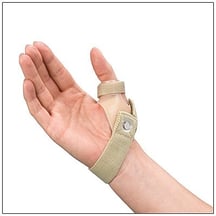 |
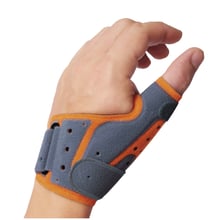 |
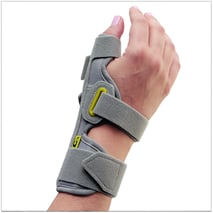 |
| ThumSaver MP | Fix Comfort Thumb Brace | 3pp Ez FIT Thumb Spica Splint |
Hand therapy during the immobilization period to review controlled range of motion exercises and strengthening when indicated may also be needed. With careful adherence to a splinting and therapy program, over 90% UCL injuries will heal.
It is important to stage the return to activity carefully to avoid a recurrence of the injury. Persistent problems may require surgical intervention to reduce the risk of chronic instability. Restrictive splinting is indicated prior to and following surgery.



